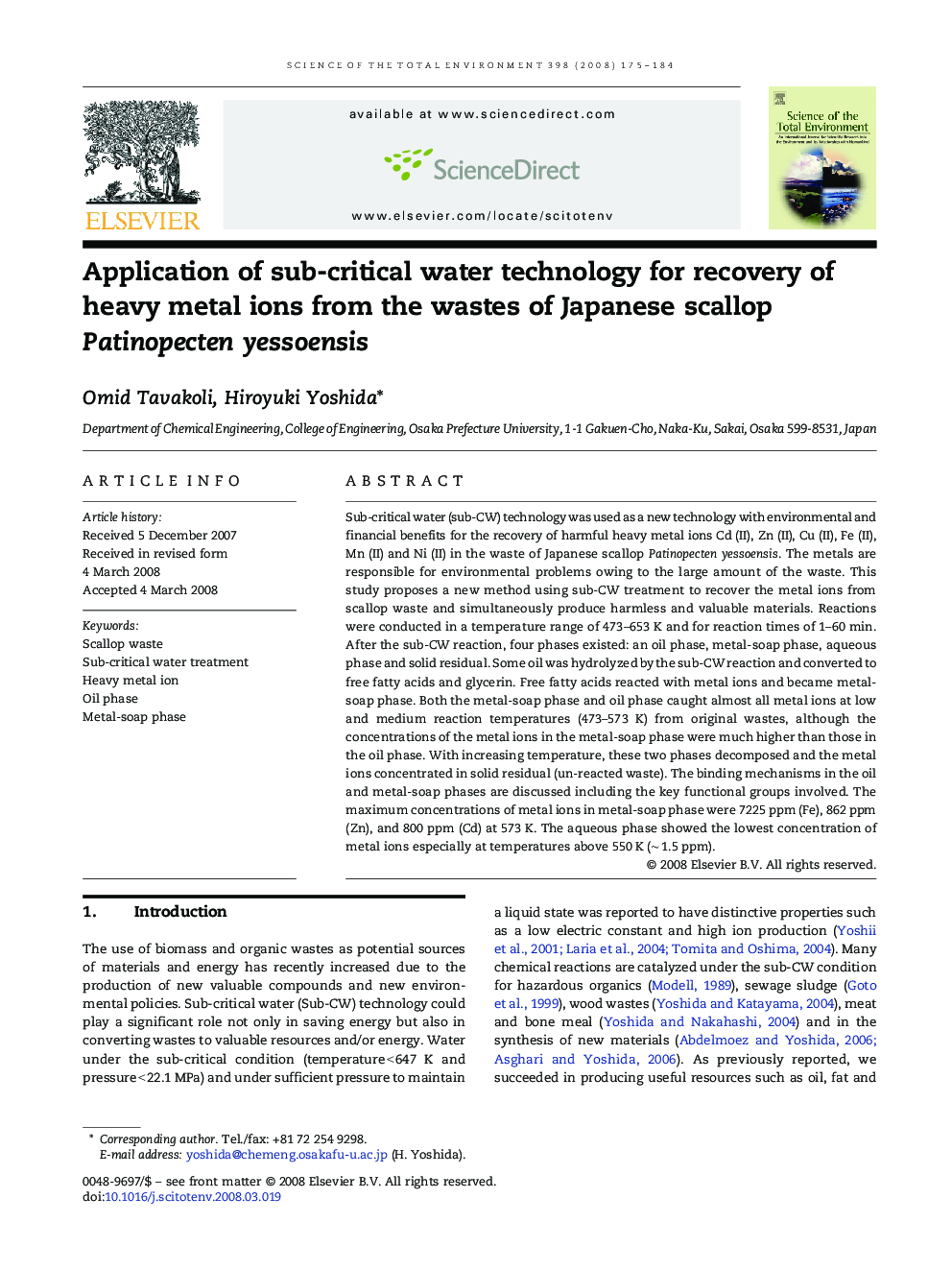| کد مقاله | کد نشریه | سال انتشار | مقاله انگلیسی | نسخه تمام متن |
|---|---|---|---|---|
| 4432680 | 1619921 | 2008 | 10 صفحه PDF | دانلود رایگان |

Sub-critical water (sub-CW) technology was used as a new technology with environmental and financial benefits for the recovery of harmful heavy metal ions Cd (II), Zn (II), Cu (II), Fe (II), Mn (II) and Ni (II) in the waste of Japanese scallop Patinopecten yessoensis. The metals are responsible for environmental problems owing to the large amount of the waste. This study proposes a new method using sub-CW treatment to recover the metal ions from scallop waste and simultaneously produce harmless and valuable materials. Reactions were conducted in a temperature range of 473–653 K and for reaction times of 1–60 min. After the sub-CW reaction, four phases existed: an oil phase, metal-soap phase, aqueous phase and solid residual. Some oil was hydrolyzed by the sub-CW reaction and converted to free fatty acids and glycerin. Free fatty acids reacted with metal ions and became metal-soap phase. Both the metal-soap phase and oil phase caught almost all metal ions at low and medium reaction temperatures (473–573 K) from original wastes, although the concentrations of the metal ions in the metal-soap phase were much higher than those in the oil phase. With increasing temperature, these two phases decomposed and the metal ions concentrated in solid residual (un-reacted waste). The binding mechanisms in the oil and metal-soap phases are discussed including the key functional groups involved. The maximum concentrations of metal ions in metal-soap phase were 7225 ppm (Fe), 862 ppm (Zn), and 800 ppm (Cd) at 573 K. The aqueous phase showed the lowest concentration of metal ions especially at temperatures above 550 K (∼ 1.5 ppm).
Journal: Science of The Total Environment - Volume 398, Issues 1–3, 15 July 2008, Pages 175–184